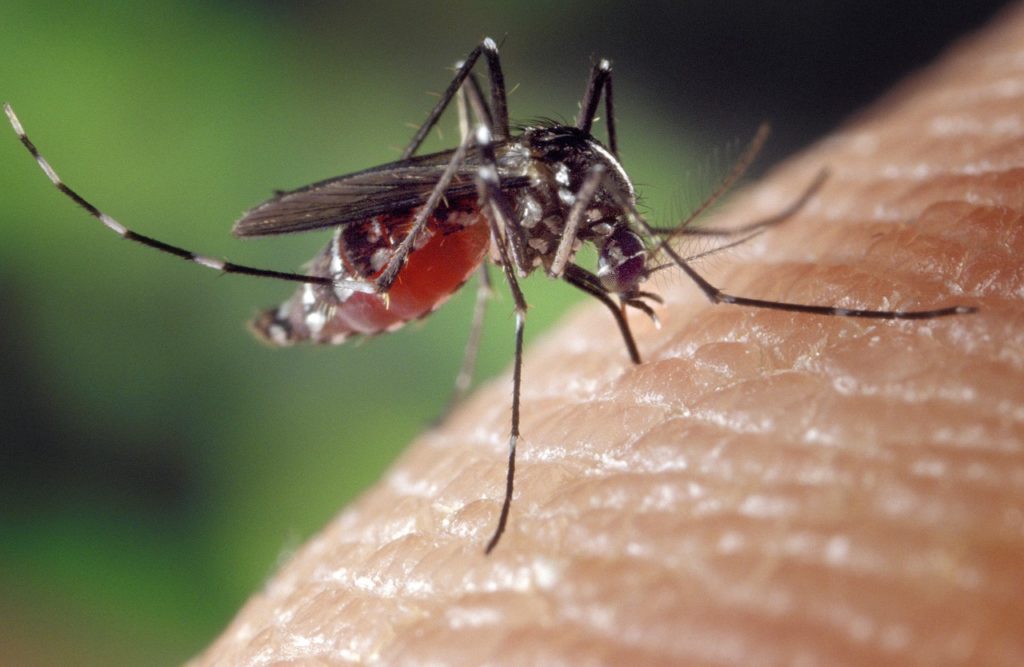What is West Nile virus?
Wide-ranging mosquito airborne disease could affect pets, livestock and humans
Recent rainfall has led to a mosquito population increase across all regions of Texas. Texas A&M AgriLife Extension Service experts advise individuals, pet and animal owners to be mindful of West Nile virus, WNV, a mosquito-borne virus that is prevalent in the U.S., and its effects.
The substantial amount of rainfall across Texas has heightened concern over growing mosquito populations. Emergency management meetings are being held to discuss recent flooding and standing water. The risk of mosquito-borne diseases like malaria and WNV has increased.

J.D. Ragland, Ph.D., AgriLife Extension agriculture and natural resources agent in Randall County, said it was announced during one of those recent meetings that WNV testing confirmed positive results in Randall County.
Protecting yourself and your animals
Ragland advised individuals to be vigilant of their surroundings to reduce the risk of transmission.
“Standing water in nearby lakes, trenches or even household items like flowerpots and wheelbarrows should be removed,” Ragland said.
He also advised that backyard pools, if not in use, should be drained for the most precaution.
“People with household pets should monitor their movements, and try to limit them to indoor places,” Ragland said.
People should also be aware of their whereabouts and of clothing, he said.
“It is important to wear long sleeve clothing and long pants,” Ragland said. “Most important is the constant application and reapplication of mosquito repellant with ingredients like DEET, oil of lemon eucalyptus and picaridin, as they are EPA-registered. Mosquitoes actively feed at dusk and dawn, so remain indoors during those times as much as possible.”
Medical preventions
There are annual vaccinations for animals that counteract West Nile virus, especially horses. Currently, there is heightened concern for horses not having received annual vaccinations with recent cases of West Nile virus reported by health officials.
The Texas Veterinary Medical Diagnostic Laboratory, TVMDL, recommends vaccinating horses in the spring, or a suitable time before mosquito season to thwart any threat of West Nile virus or Eastern Equine Encephalitis virus.
“Even though mosquito season has already begun, it’s never too late to get your horse vaccinated, it’s still effective,” said Terry Hensley, DVM, TVMDL assistant agency director and AgriLife Extension Service veterinarian, Bryan-College Station. “Work with your veterinarian as to what vaccines are recommended.”
Hensley also advises horse owners to remove any objects that hold standing water and recommends using mosquito dunks.
“Overall, two points to remember are getting vaccines and to control mosquito habitat,” Hensley said. “There are some very effective vaccines out there and it’s important to keep them updated.”
If you believe you or your horse have been infected, watch for the following symptoms:
Symptoms in horses:
- High fever.
- Incoordination; stumbling, staggering and/or sluggish.
- Inability to stand.
- Off feed, no desire to eat.
- Acute death.
Hensley said if the horse exhibits any of the above symptoms to contact a local veterinarian as quickly as possible.
Symptoms in people:
According to the Centers for Disease Control and Prevention, the majority of people infected do not develop any visible symptoms. Of the few people who do, they can expect to see:
- High fever.
- Headache.
- Neck stiffness.
- Disorientation.
- Muscle weakness.
- In extreme cases, convulsions, numbness, paralysis and coma.
The Centers for Disease Control and Prevention has additional guidelines for WNV safety precautions.
Health officials throughout Texas are continuing WNV testing. The Texas Department of State Health Services, DSHS, has reported the recent Texas counties with West Nile activity that can be found here: DSHS West Nile graph.
*Reporting for this story was provided by Fatyma Lawal, part of the Science Influencers program in the Department of Agricultural Leadership, Education and Communications.


